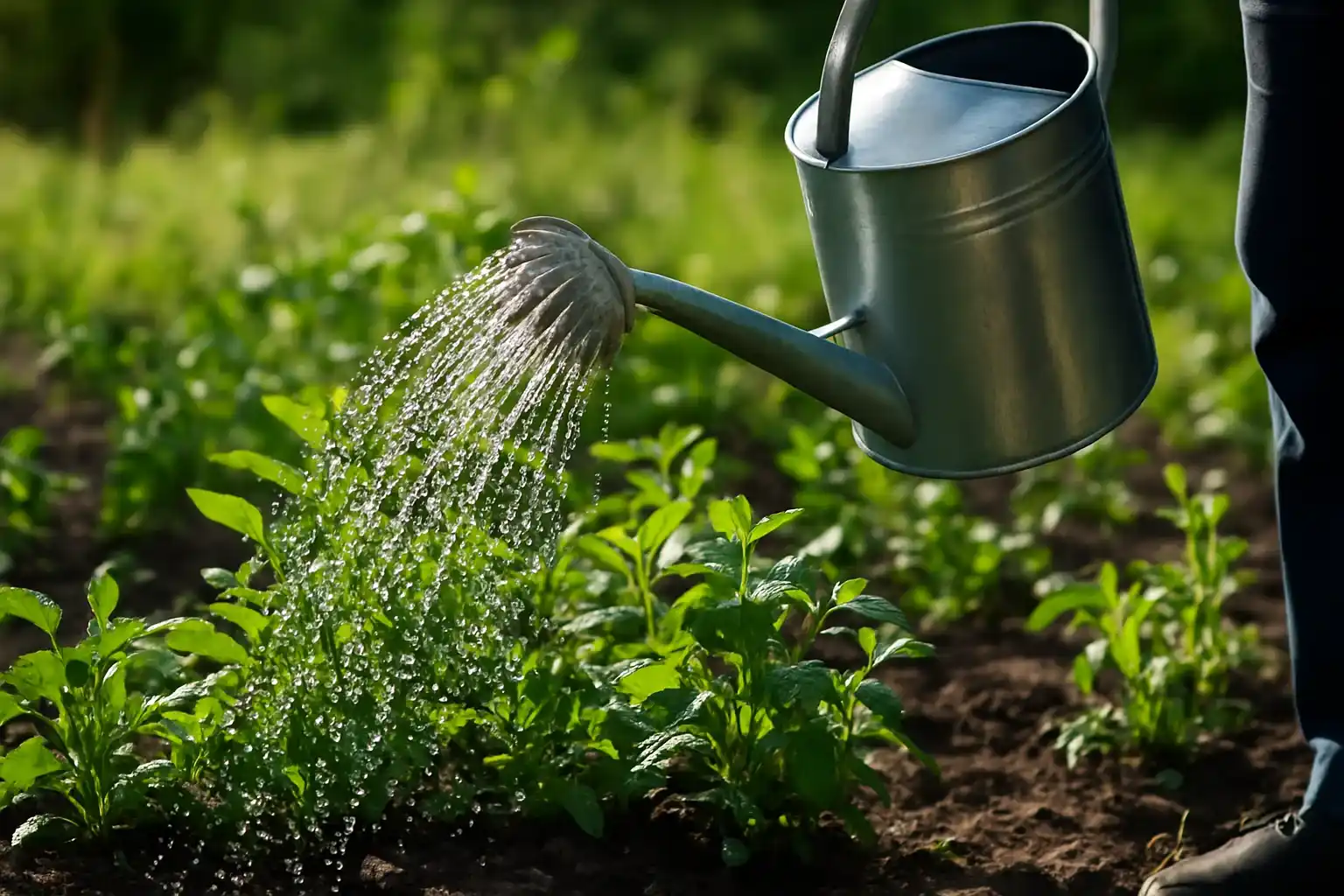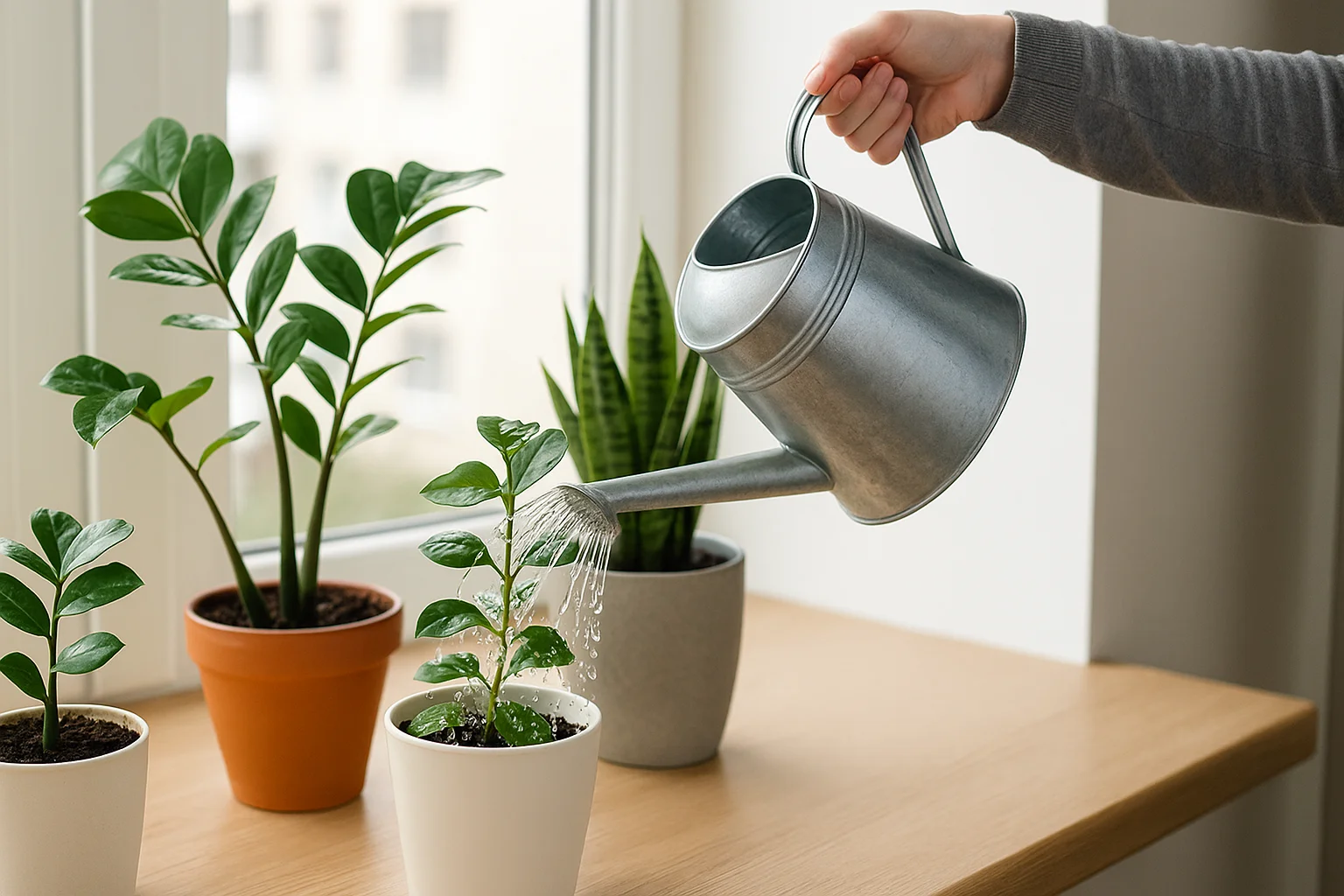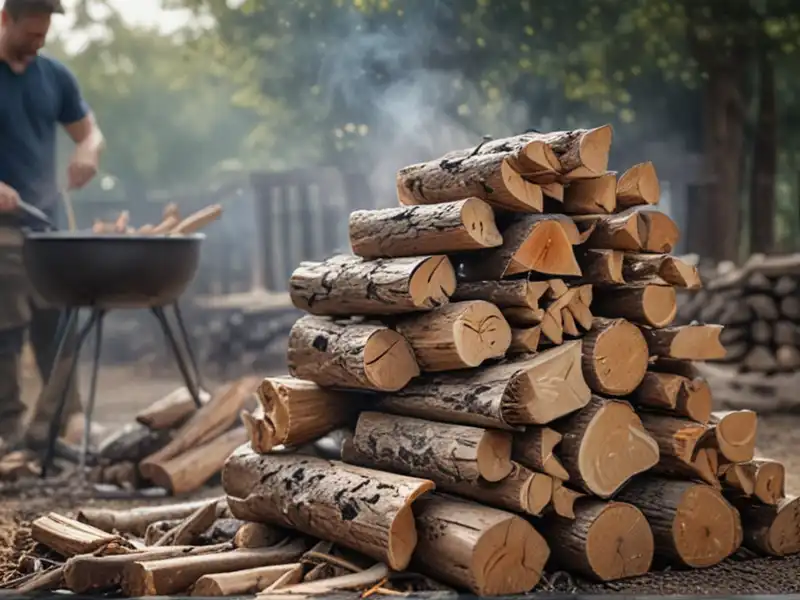Morning, Evening, or Midday? The Best Time to Water Plants Explained
Plant watering is the process of providing water to plants to maintain their growth, health, and survival. It sounds simple, but it’s actually one of the most crucial and delicate parts of plant care.
Why is watering important?
Water as a nutrient carrier: Water dissolves minerals in the soil, making them accessible for plant roots.
Photosynthesis: Plants use water, along with sunlight and carbon dioxide, to produce energy (sugars).
Temperature regulation: Water cools plants through transpiration (release of water vapor from leaves).
Cell structure: Adequate water keeps plant cells firm, preventing wilting.
In short, plant watering is about balance — too little water leads to stress and wilting, while too much causes root rot and diseases.
The Best Time to Water Plants
Watering might seem like the simplest task in gardening, but when you water is just as important as how much. Timing affects how efficiently plants absorb water, how well they withstand heat, and even how prone they are to disease. Let’s break it down.
Outdoor Plants

Early Morning (5:00–9:00 a.m.) — The Gold Standard
Most gardeners agree that early morning is the best time to water. Here’s why:
Cool temperatures = less evaporation.
The air and soil are cooler, so water seeps down to the roots instead of evaporating off the surface.
Leaves dry quickly.
If any water splashes onto leaves, the rising sun will dry them before nightfall. Wet leaves overnight are breeding grounds for fungi like powdery mildew or leaf spot.
Plants are hydrated for the day.
Watering in the morning ensures that roots store enough moisture to help plants cope with midday sun and wind.
👉 Morning watering is especially critical in hot, dry climates where the midday heat can stress plants.
Evening (6:00–8:00 p.m.) — The Runner-Up
If mornings don’t fit your schedule, watering in the evening is the next best choice.
The advantages: Temperatures are cooler, so less water evaporates. Soil has the night to soak in moisture.
The downside: If leaves stay wet overnight, fungi and pests can thrive. To reduce this risk, aim to water the soil directly at the base of the plant, not the foliage.
👉 Evening watering works well in areas where nights are not overly humid, and when you can water carefully at the soil level.
Midday (10:00 a.m.–3:00 p.m.) — Not Recommended
Watering under strong sun is inefficient and can harm plants.
High evaporation rates mean much of the water never reaches the roots.
Rapid temperature change (cold water on hot soil) can stress or even shock delicate roots.
Droplets on leaves can act like tiny magnifying glasses, scorching foliage.
👉 Avoid midday watering unless it’s an emergency and your plants are visibly wilting.
Indoor Plants
Indoor watering is less about clock time and more about the plant’s natural rhythm. Still, morning or early afternoon is ideal.
Plants get moisture when they’re most active in photosynthesis.
Soil dries out slightly by night, preventing fungus gnats and root rot.
Consistency is key: pick a regular time so plants “expect” water in their growth cycle.
Factors That Influence Best Watering Time
Climate:
In desert or tropical areas, early morning is crucial to beat evaporation.
In mild, cloudy regions, evening watering is often safe.
Soil type:
Sandy soil drains quickly, so morning watering ensures plants have access during the day.
Clay soil retains moisture longer, so evening watering may be less risky.
Plant type:
Succulents and cacti benefit from morning watering because they store moisture during the day.
Leafy greens and annual flowers need consistent hydration, so morning is best to prevent midday stress.
Quick Comparison: Morning vs. Evening
Aspect | Morning Watering | Evening Watering |
Evaporation Loss | Very low | Low |
Disease Risk | Low (leaves dry) | Higher (leaves stay wet) |
Plant Stress in Heat | Prevented | Plants may face day’s stress before relief |
Overall Efficiency | Best choice | Good second option |
If you want your plants to thrive, early morning watering is the clear winner. It reduces evaporation, minimizes disease risk, and gives plants the strength to handle the day. Evening watering is acceptable if done carefully at the base of the plant, but avoid leaving leaves wet overnight.
For indoor plants, stick to morning or midday to keep soil balanced and roots healthy.
Methods of Watering Plants
Watering isn’t just about pouring water over soil — the method you choose affects how much water plants actually get, how efficiently it’s used, and even how healthy the roots become. Different settings (gardens, farms, indoor pots) call for different approaches. Let’s explore the main methods.
1. Manual Watering
This is the most traditional method, done with watering cans, hoses, or buckets.
Advantages:
Simple, inexpensive, and requires no special setup.
Lets you control exactly how much water each plant receives.
Great for small gardens, indoor plants, or delicate seedlings.
Limitations:
Time-consuming for larger areas.
Inconsistent if not done carefully (some plants may get too much, others too little).
👉 Best for hobby gardeners, potted plants, and small beds.

2. Basin or Ring Method
Water is poured into a shallow basin or ring-shaped trench around the plant’s base.
Advantages:
Directs water to the root zone.
Reduces runoff on sloped ground.
Useful for fruit trees, shrubs, and larger vegetables.
Limitations:
Requires regular reshaping of basins.
Labor-intensive for large areas.
👉 Ideal for young trees and large individual plants.
3. Sprinkler Irrigation
Sprinklers spray water over plants much like natural rainfall. They can be stationary, rotating, or moving systems.
Advantages:
Covers large areas with minimal effort.
Can be automated with timers.
Even distribution when set up properly.
Limitations:
High water loss due to evaporation and wind drift.
Wet leaves can increase fungal diseases.
Expensive to install and maintain.
👉 Common in lawns, fields, and large gardens.
4. Drip Irrigation
Water is delivered directly to the root zone through small pipes, tubes, or emitters.
Advantages:
Extremely water-efficient — little evaporation or runoff.
Reduces weed growth (water only goes to the plants, not surrounding soil).
Can be automated with timers and moisture sensors.
Limitations:
Higher initial cost.
Pipes and emitters can clog without proper maintenance.
👉 Excellent for orchards, vineyards, vegetable beds, and water-scarce regions.
5. Furrow and Flood Irrigation
Common in traditional farming, this involves channeling water along furrows (small trenches) or flooding entire fields.
Advantages:
Simple and inexpensive.
No special equipment needed.
Limitations:
Wastes large amounts of water.
Causes soil erosion and nutrient leaching.
Uneven distribution.
👉 Still used in rice paddies and regions where water is abundant.
6. Self-Watering Systems
These include wicking pots, self-watering containers, and capillary mats where plants draw water as needed.
Advantages:
Consistent moisture levels without daily effort.
Great for busy people or those traveling.
Prevents overwatering.
Limitations:
Limited to container plants.
Initial setup can cost more than simple pots.
👉 Perfect for indoor plants, balconies, and urban gardening.
7. Advanced Smart Watering
With modern technology, smart irrigation systems use sensors and apps to regulate watering automatically, e.g., AI Plant Finder.
Features:
Soil moisture sensors to detect dryness.
Weather-based adjustments (skips watering if rain is forecast).
Smartphone apps for remote control.
👉 A sustainable option for large landscapes and eco-conscious gardeners.
There’s no one-size-fits-all watering method. The right choice depends on scale, resources, and goals. Efficient watering is a balance — enough to keep roots healthy, but not so much that water is wasted.
Sum Up
A good fit here is a quote by Luther Burbank (American botanist and horticulturist, 1849–1926):
“A flower is an educated weed.”
Burbank’s words remind us that the difference between a struggling weed and a thriving flower is often the care we give it. Watering is part of that education. When we water wisely — choosing the right method and timing — we guide plants from mere survival toward growth, strength, and beauty. Without that thoughtful balance, even the finest plant can wither.


